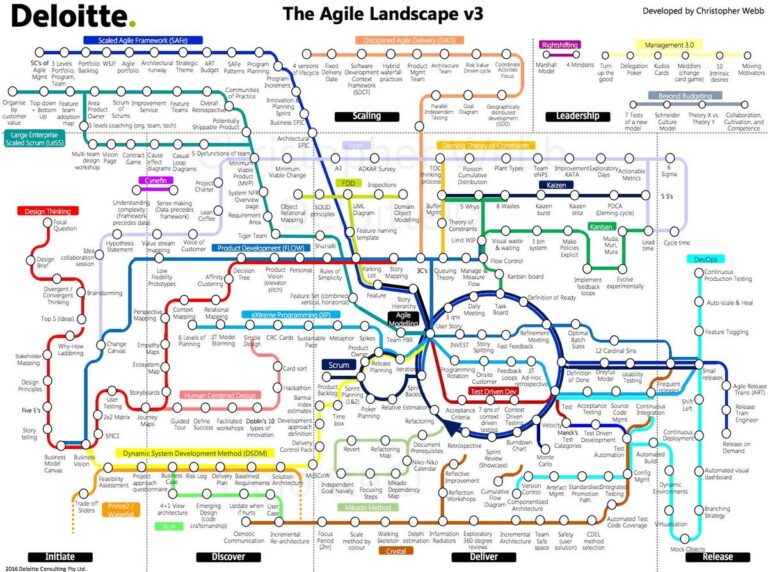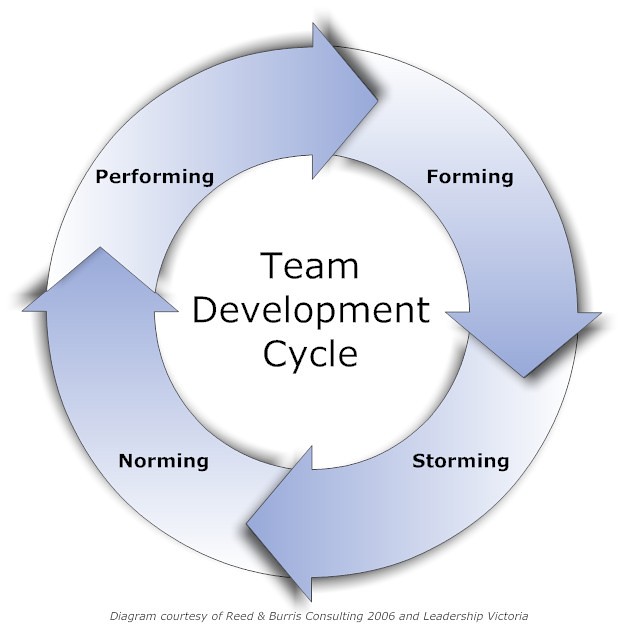Practices for greater team efficiency (Part 2)
Practices for greater team efficiency (Part 2)
It is obvious when a team lacks motivation, drive and efficiency: productivity drops, dissatisfaction grows and people leave. To counter this trend – strong team practices have to be established for each team. This post summarises some of the ways of working related to everyday work execution, continuous improvement and building trust – that almost any team can adopt to increase their drive and efficiency.
Everyday work execution
One of the most important elements in the everyday work execution is to make all the work of the team visible – visualising work items that the team is working on. This is most often done by implementing boards (physical or virtual) with multiple columns (the most popular: “To-Do”, “In-Progress”, “Done”). Each column denotes a phase in the workflow of the work items and the objective is to move the work items through the workflow to achieve a ‘Done’ status – when the work item is complete. There are many online tools that can be used for managing such boards with tasks. Visualising the work gives a good overview of what the team is working on, what is the status of each task, as well as what’s the overall progress of the team.
The team has to work together like a perfectly functioning clockwork. This does require being in perfect sync with the other team members. For that – it is best if the team meets on a daily basis for 5-15 minutes to sync and align. The meeting is simple – the visualised work items on board are the centrepiece to review; for each task (from right to left on the board) assigned team member(s) provide a very short update on the latest developments and highlight any obstacles that they have (if any) for completing the task. In this way, the team members know what the other team members are exactly doing and can help if there are any issues. At the end of the meeting, the team members can discuss what can they do better to reach the goals set in the planning.
The role of a manager should also change from a micro-manager and person who gives orders to a visionary who sets the goals and direction, explains the strategy and priorities, and removes any impediments in the way of the team. Enabling the team to perform at its maximum efficiency should become the objective of a manager. That requires both – guiding and helping the team, as well as closely monitoring the team’s health – caring not only about productivity and results but also about the well-being of and vibe inside the team.
Finally, an important element that improves efficiency is to ask the team to ‘publicly’ demonstrate their work products – show and tell the work they have completed to other colleagues, teams, management, stakeholders or even customers. Naturally, this greatly expands accountability and ownership of the team members – holding each other accountable in the team and the team accountable towards stakeholders. There is also pride in one’s work – it improves the motivation of team members – and motivation is one of the most scarce and intricate ingredients in today’s workplace.
Continuously learning and improving - the culture of learning and creativity
Teams have to constantly improve on their efficiency – regularly calibrate, tweak, and improve the way they collaborate to make sure the team’s ways of working adapt to the new circumstances and the efficiency can improve (or at least not drop). The best way to do it is through retrospectives – regular reflections at the team level on what is working well and what should be improved in the way team members collaborate (get my guide on how to run retrospectives). Teams should run retrospectives at minimum once per month and always come up with at least one practical change that the team will make to improve their collaboration.
Another important aspect of continuous improvement is the feedback culture. Feedback should be embedded into the DNA of a company – asking for feedback at any time, in any direction, in any form. For example, 1:1 meeting can start with mutual feedback (even if it’s a boss-subordinate 1:1); a townhall/ all-hands meeting can start by collecting feedback about the team’s sentiment and end with feedback about the meeting itself (p.s. any meeting can end with giving feedback). 360-degree feedback surveys, performance evaluation, leadership quality, company culture, and many more topics can (should) be assessed and improved by asking for feedback. Should the feedback be open or anonymous remains to be decided in each company individually (both can work), nevertheless, feedback giving and receiving has to become a hygiene factor, an everyday routine for continuous micro-improvements in the company.
Finally, an employer should recognise that staff often have other interests outside their main sphere of expertise. Creating a safe space to nurture these interests at the workplace and actually be synergetic for the employee and employer. Such safe space is established by creating communities of practice (CoP) – these are groups of staff members who have similar interests and they regularly meet up at the workplace to discuss the latest developments in their particular sphere of interest, and together with other colleagues plan to expand their knowledge together, learn new information and skills, as well as organise their knowledge in a structured and easily accessible way for other people in the company. CoP is a renowned continuous learning technique that is suitable for corporate environments to steer continuous growth and learning efforts in a structured and beneficial way. Communities need formal recognition, a simple management structure, common communication channels and information storage tools, as well as sometimes – financial support from the company.
Building trust
Last but not least – a team’s efficiency is very dependent on the trust level in a team. While it is not always possible for colleagues to be friends – teams should strive to have a similar level of trust. I have dedicated an entire post to how to build trust in teams, but, essentially, the recipe is very simple – get informal, personal and vulnerable. The change should start from the manager – create more opportunities for the team to be in an informal setting, socialise, and talk about other things not work, even personal topics. Those can be fancy team-building events or just 25-minute weekly coffee breaks where team members are forbidden to talk about work – expand the topics in the team to include and respect personal issues. Giving space for topics related to very human issues – also ‘humanises’ the team, and builds inclusive and tolerant culture.
Vulnerability is another significant ingredient of trust building – this too needs to start from the manager. Team leaders should show their vulnerable, always protected or hidden sides. Not only does vulnerability break the ice, it also encourages other people to open up. Collective recognition that we are all human and we have our weak spots, pains, insecurities, and problems adds to the bonding and greater trust level in the team.
In summary, the team’s efficiency is facilitated by making all work visible and using the work item visualisation to sync up inside on a regular basis. The manager can greatly help a team to become more efficient by acting as a compass (showing direction) and removing any obstacles from the way of the team. The continuous learning and improvement culture is embedded in a team by retrospectives, constant feedback, and communities of practice. The final ingredient for efficient teams is trust – building which is also the role of a manager.
If you missed it – check out the 1st part of this article to learn more ways of working related to building autonomous teams and work planning practices – almost any team can adopt these to increase their drive and efficiency!







